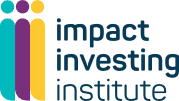
Asset class trends in emerging markets
Private debt is a large asset class in emerging markets, raising a record USD
9.4 billion in 2018. Managers have strong and established track records.
- 47% of global institutional investors surveyed by the Emerging Markets Private Equity Association (EMPEA) said they plan to expand their investments in emerging markets private debt
- Private debt is also the largest asset class in impact investing, accounting for 37% of all investments, including both market and below market rate. In 2019, Symbiotics, a market access platform for impact investing, counted USD 17.2 billion globally in impact private debt, growing to a 11% compound annual growth rate (CAGR) from 2012-2016
Microfinance is a large category of private debt, providing capital to microfinance institutions to lend to micro-, small and medium-sized enterprises (MSMEs). Since the 1990s, microfinance has developed a strong track record of high repayment rates (95%-99%) and is attracting significant institutional investment
Trade finance debt, which provides working capital loans to improve cash flow in value chains, is also a growing sector. The sector is underfinanced by banks and traditional financial institutions, with estimates that the total addressable market for trade finance in Africa and Asia is worth around USD 30 billion.
Key features
Regular cash flow and generally stable returns profile through regular distributions, and lower volatility compared to equity investments
High levels of demand from companies: Private debt products are in high demand in emerging markets as they offer better terms than traditional bank loans – debt funds can therefore be highly selective when choosing deals
Historical challenges
Risk of lower returns in select sectors
- Solutions include: ‘Tranche’ structures leverage concessional debt to offer different risk / return profiles to different investors and secure market-rate returns for private limited partners
Market infrastructure and governance concerns, given limited credit assessments available in emerging markets
- Solutions include: Donors and development finance institutions offer loan guarantees to asset managers to protect private investors against a first loss up to a significant sum or percentage (e.g. >40% in the Emerging Africa Infrastructure Fund); while funds without development finance institution involvement focus on robust diligence and risk monitoring processes
Why invest?
Income generation: Many debt funds in emerging markets offer steady, low- risk income generation for institutional investors
High impact for Small and Medium Enterprises (SMEs) and MSMEs: SMEs and MSMEs are unable to access debt from traditional banks or financing institutions, and therefore rely on services offered by microfinance institutions or trade finance funds for loans and cash flow
Examples of private debt funds in emerging markets include:
-
Emerging Markets Loans Fund
The Emerging Markets Loans Fund extends socially and environmentally responsible senior loans with fixed maturity dates to financial institutions, renewable energy firms and agribusinesses.
-
Financial Inclusion Fund
The Financial Inclusion Fund (formerly Institutional Microfinance Fund III) is the third-generation financial inclusion fund offered by ACTIAM and Developing World Markets (DWM), raising debt capital from institutional investors to provide financing to financial inclusion institutions (FIIs) across emerging markets, with expected market-rate returns. Investments are de-risked through ACTIAM’s FII selection approach and active support…
-
Global Sustainable Income Fund II
The Global Sustainable Income Fund II is the second closed-end private debt fund managed by TriLinc Global Advisors. It provides private term loans and trade finance loans to small and medium-sized enterprises across emerging markets to create trade and economic growth through access to finance.




